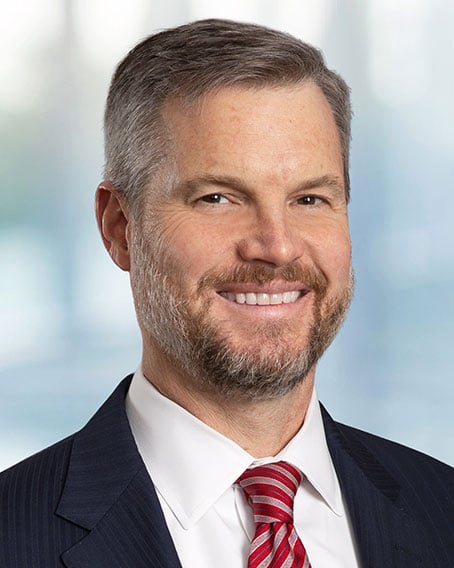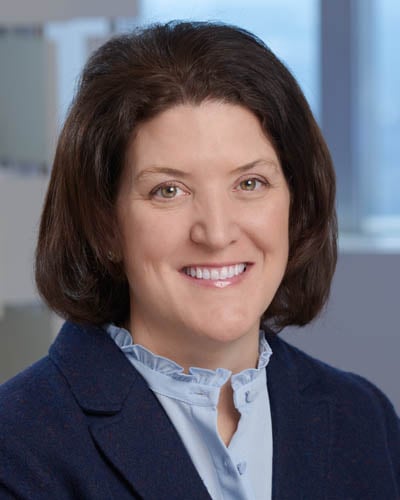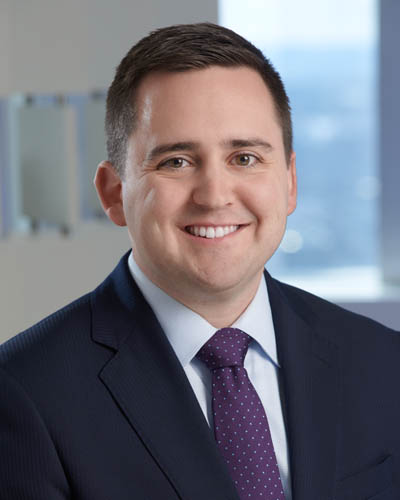In the wake of the current global financial crisis caused by the COVID-19 pandemic, the Federal Reserve, in conjunction with the Department of the Treasury, has established several fiscal and monetary stimulus programs to seek to address and mitigate market disruptions, including the Term Asset-Backed Securities Loan Facility (“TALF”).1 The TALF is a $100 billion credit facility under which the Federal Reserve Bank of New York (“FRBNY”) (through a special purpose vehicle) will make non-recourse loans to eligible borrowers. Using funds appropriated under the CARES Act, the U.S. Department of Treasury will make an equity investment of $10 billion in such special purpose vehicle. The purpose of the TALF is to ensure that U.S. businesses can continue to access credit at affordable terms despite current market turmoil. Loans under the TALF will have three-year terms and will be non-recourse to the borrower unless the requirements of the TALF are not met or are breached. The current termination date of the TALF is specified as September 30, 2020, after which no new loans will be made unless the program is extended by the Federal Reserve. See the Ropes & Gray Podcast here on COVID-19: TALF 2.0: Anticipating the 2020 Term Asset-Backed Securities Loan Facility Program.
On May 12, 2020 the Federal Reserve published an updated Term Sheet for the TALF, which is maintained on its website, and the FRBNY published frequently asked questions (“FAQs”) relating to the TALF on its website.
This client alert summarizes key terms and conditions of the TALF, in particular, those that are relevant to investment funds that wish to participate in the program.
Eligible Borrower
Participation in the TALF is limited to “eligible borrowers.”
Eligible borrowers include businesses that (a) are created or organized in the United States or under the laws of the United States, (b) have significant operations in and a majority of their employees based in the United States, and (c) maintain an account relationship with a primary dealer.
The guidance provided in the frequently asked questions issued by the FRBNY specifically contemplates that investment funds may participate provided they meet the relevant eligibility criteria. The types of investment funds that may participate include, without limitation, hedge funds, private equity funds, mutual funds, and funds of one.
In the context of an investment fund, the “significant operations” requirement must be met by the fund’s investment manager. Although not an exclusive definition, the FRBNY provided the following example of what would constitute “significant operations”:
“A borrower (or an investment manager in the case of an investment fund) with greater than 50 percent of its consolidated assets in, annual consolidated net income generated in, annual consolidated net operating revenues generated in, or annual consolidated operating expenses (excluding interest expense and any other expenses associated with debt service) generated in the United States as reflected in its most recent audited financial statements.”
Foreign Government Investors
An entity will not be eligible to participate in the TALF if a foreign government is a “Material Investor” in the entity. In addition, in the case of an investment fund that borrows under the TALF, the investment manager of such an investment fund must not have any Material Investors that are foreign governments. A “Material Investor” is defined as a person who owns, directly or indirectly, 10% or more of any outstanding class of securities of an entity.
Registered Funds
In connection with the original TALF program introduced in 2009, the staff of the Securities Exchange Commission (the “SEC”) issued a key no-action letter that addressed some specific considerations relating to registered funds participating in the program, specifically in relation to limits on borrowings applicable to registered funds and requirements around how registered funds custody their assets.2
The SEC staff has not yet issued similar no-action relief with respect to the TALF; however, to the extent that the primary terms and operational matters of the TALF are similar to the 2009 program, we think it is likely the SEC staff will extend the no-action relief issued on these points in 2009 to the TALF.3
Borrower Representations and Certifications
In connection with participating in the TALF, borrowers will be required to make various representations and certifications to its primary dealer(s), including the following:
- Each borrower will be required to represent, on a continuous basis, that the borrower is an “eligible borrower.” A borrower must meet the “eligible borrower” conditions at all times during which its loans under the TALF are outstanding, including with respect to the restrictions on ownership by a foreign government. The FAQ relating to this requirement provides that a TALF borrower is expected to have a mechanism for continuously monitoring its direct and indirect investors as long as the TALF loan is outstanding. This means, for example, that funds, such as hedge funds, that are continuously offered or which permit redemptions, will need to monitor participation by its foreign government investors to ensure that they do not breach the restriction on foreign government ownership discussed above.
- Each borrower will be required to certify that it is “unable to secure adequate credit accommodations” from other banking institutions and that it is not insolvent. According to the FAQs, this certification does not require that the borrower not have access to any credit, but rather that the borrower is unable to secure credit on prices or terms that are consistent with a “normal, well-functioning market.”
- Each borrower will be required to certify that it meets the conflict of interest requirements of Section 4019 of the CARES Act, relating to the Executive Branch of the government.4
- It is expected that the Customer Agreement that a borrower will enter into with each primary dealer will include additional representations and certifications that the borrower will need to make, as well as require each borrower to provide various know-your-customer and anti-money laundering documentation and a legal opinion addressing certain matters.
Information that Will Be Publicly Disclosed
The Federal Reserve will disclose on its public website the name of each borrower and all Material Investors of each borrower. Additionally, the Federal Reserve will publish information regarding the amount of the loans, the interest rates paid, the types and amounts of collateral posted by each borrower and the overall costs, revenues, and other fees for the TALF.
Eligible Collateral
Loans made to eligible borrowers under the TALF are secured by certain asset-backed securities (“ABS”) that meet specified criteria.
ABS must have the following characteristics to be eligible collateral:
- Non-synthetic and rated in the highest long-term rating category (or short-term investment grade category if no long-term rating is available) by two eligible nationally recognized statistical rating organizations and not rated below the highest investment-grade rating category by any eligible NRSRO. The FAQs specify which NRSROs are eligible rating agencies under the TALF.
- Most types of ABS must be issued on or after March 23, 2020, except SBA Pool Certificates and Development Company Participation Certificates must be issued on or after January 1, 2019. By contrast, CMBS must have been issued prior to March 23, 2020. Eligible collateral must have underlying exposure to newly issued auto-related loans, student loans, credit card receivables, dealer floorplan loans, equipment loans and leases, small business loans fully guaranteed as to principal and interest by the U.S. Small Business Administration, leveraged loans, premium finance loans for property and casualty insurance or commercial mortgages.
- Eligible collateral must have been acquired at original issuance or in an arms-length secondary market transaction within 30 days prior to the loan subscription date. Practically, this requires borrowers to acquire ABS on the day they borrow from the TALF, or within 30 days prior to the borrowing. Collateral acquired outside that window is not eligible.
- All or substantially all of the credit exposures underlying the eligible collateral must be originated by U.S.-organized entities (ABS) or have a lead or co-lead arranger that is a U.S.-organized entity (CLOs), and be made to U.S.-domiciled obligors or in respect of real property located in the U.S. or one of its territories.
Additional Information
As of the date hereof TALF is not yet operational. It is expected that the FRBNY will publish a form of Master Loan and Security Agreement (“MLSA”) that will be used to apply for loans. The terms and conditions published on the Federal Reserve’s website (which may be updated from time to time), the terms and conditions specified in the MLSA and the guidance provided in the FAQs will constitute the terms and conditions for loans under the TALF.
Investment managers who wish to discuss opportunities related to TALF are encouraged to contact their Ropes & Gray attorney.
- The current TALF is similar to the TALF introduced following the 2008-2009 financial crisis; however, there are some differences in the terms and conditions and the types of eligible collateral.
- See Franklin Templeton Investments, SEC No-Action Letter (pub. avail. June 19, 2009), available at https://www.sec.gov/divisions/investment/noaction/2009/franklintempleton061909.htm.
- The SEC Staff also issued a No-Action Letter to T. Rowe Price in relation to the 2009 TALF with respect to the ability of certain registered funds advised by T. Rowe Price to participate in TALF by investing in one or more private funds managed by T. Rowe Price that would participate in TALF. However, the T. Rowe Price No-Action letter specifically stated that it applied to the applicable T. Rowe Price entities only and could not be relied on by other third parties for interpretive guidance. See T. Rowe Price Associates, Inc., SEC No-Action Letter (pub. avail. October 8, 2009), available at https://www.sec.gov/divisions/investment/noaction/2009/troweprice100809.htm.
- Section 4019 of the CARES Act generally prohibits any business directly or indirectly owned by the President, senior executive branch officials or members of Congress (and families of each) from receiving emergency economic relief funds.
Authors
Stay Up To Date with Ropes & Gray
Ropes & Gray attorneys provide timely analysis on legal developments, court decisions and changes in legislation and regulations.
Stay in the loop with all things Ropes & Gray, and find out more about our people, culture, initiatives and everything that’s happening.
We regularly notify our clients and contacts of significant legal developments, news, webinars and teleconferences that affect their industries.




